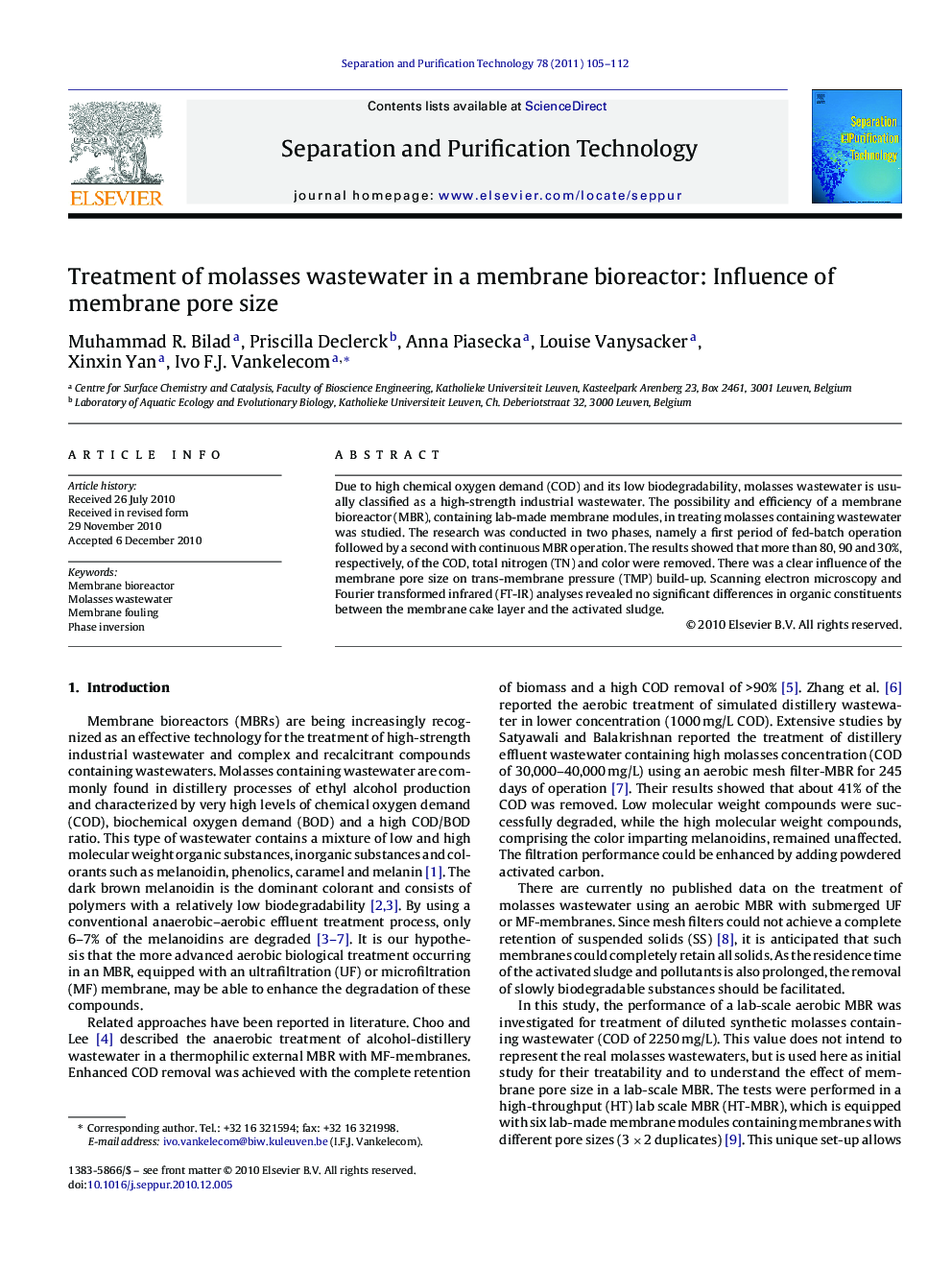| Article ID | Journal | Published Year | Pages | File Type |
|---|---|---|---|---|
| 642715 | Separation and Purification Technology | 2011 | 8 Pages |
Due to high chemical oxygen demand (COD) and its low biodegradability, molasses wastewater is usually classified as a high-strength industrial wastewater. The possibility and efficiency of a membrane bioreactor (MBR), containing lab-made membrane modules, in treating molasses containing wastewater was studied. The research was conducted in two phases, namely a first period of fed-batch operation followed by a second with continuous MBR operation. The results showed that more than 80, 90 and 30%, respectively, of the COD, total nitrogen (TN) and color were removed. There was a clear influence of the membrane pore size on trans-membrane pressure (TMP) build-up. Scanning electron microscopy and Fourier transformed infrared (FT-IR) analyses revealed no significant differences in organic constituents between the membrane cake layer and the activated sludge.
Graphical abstractFigure optionsDownload full-size imageDownload as PowerPoint slideHighlights► Membrane bioreactor was used to treat molasses containing wastewater. ► More than 80.9%, 90.1%, and 30% of COD, TN and color, respectively, were removed. ► Lower membrane fouling was observed for higher membrane pore size. ► Foulant autopsy showed no significant differences between the sludge and the cake.
